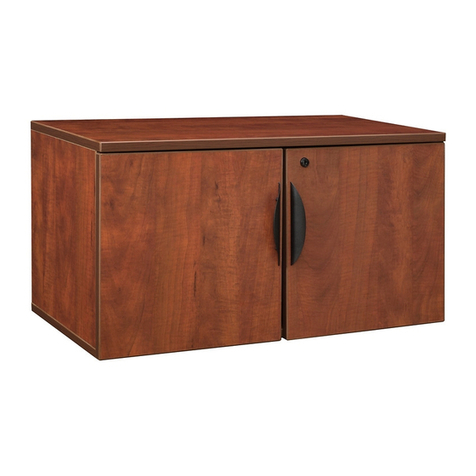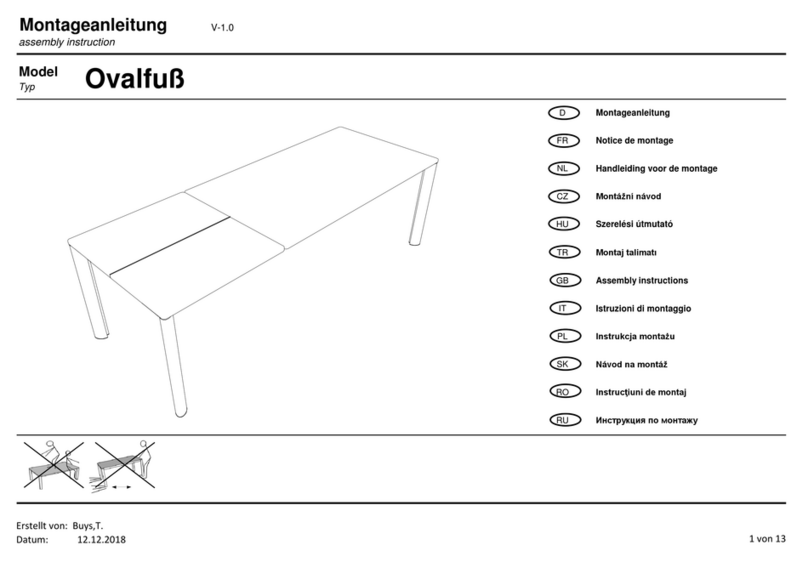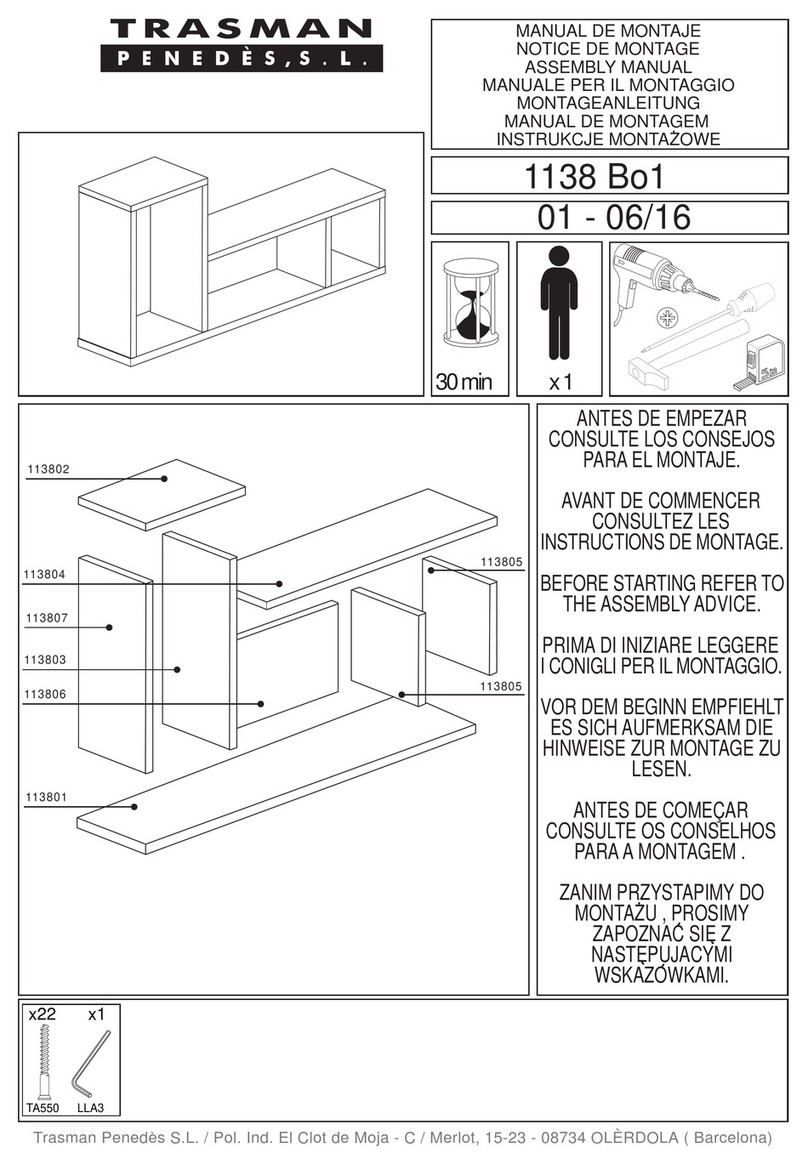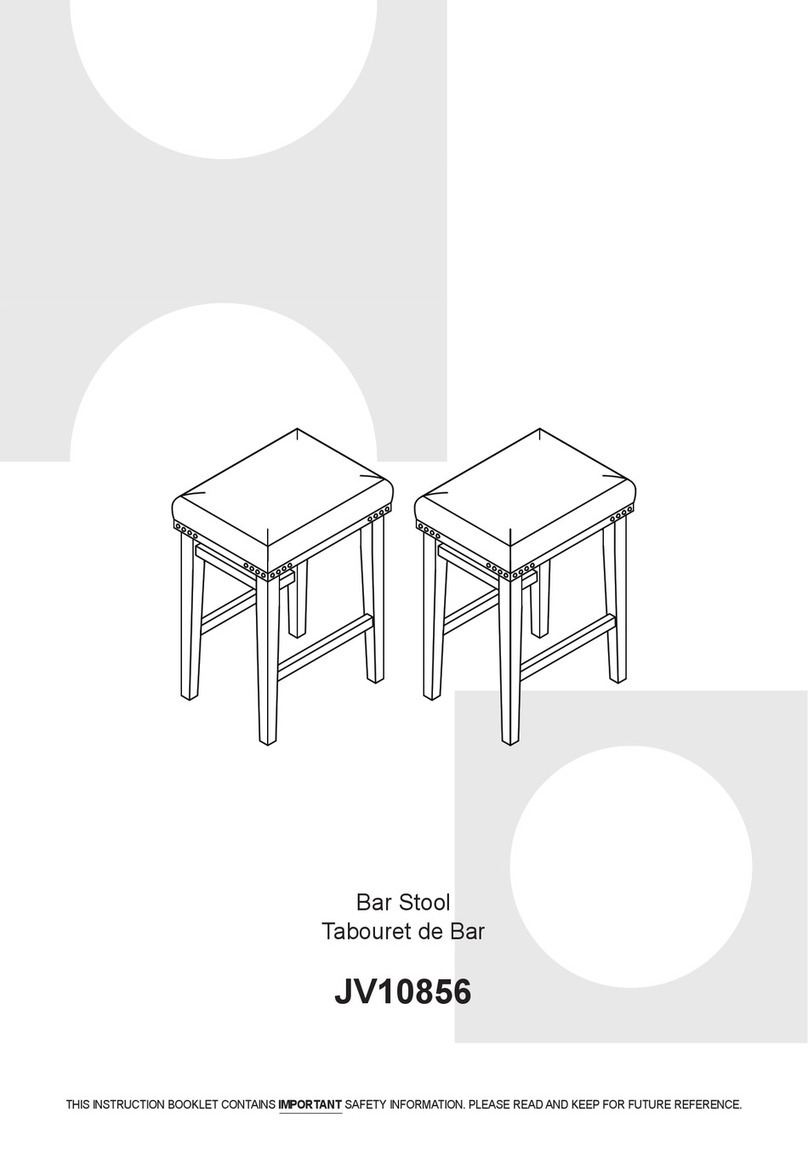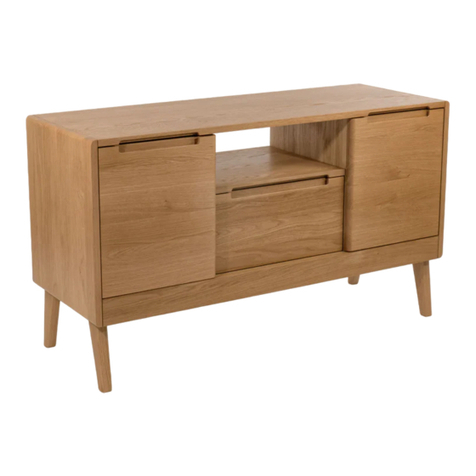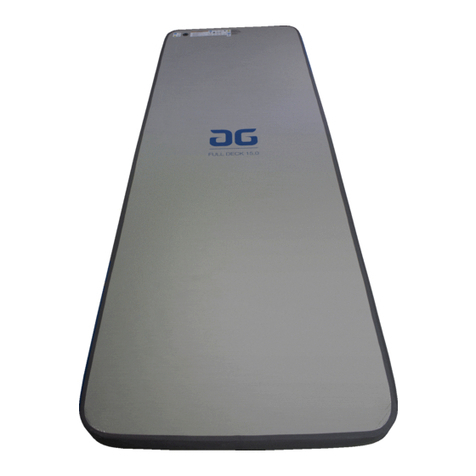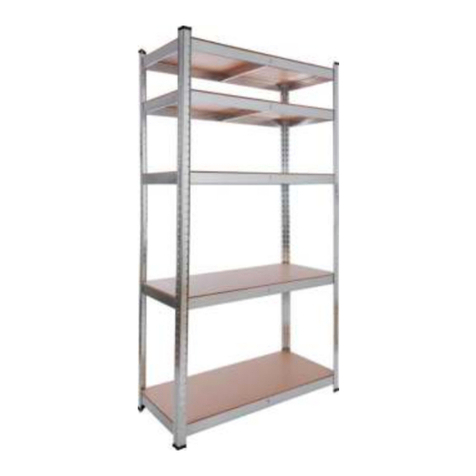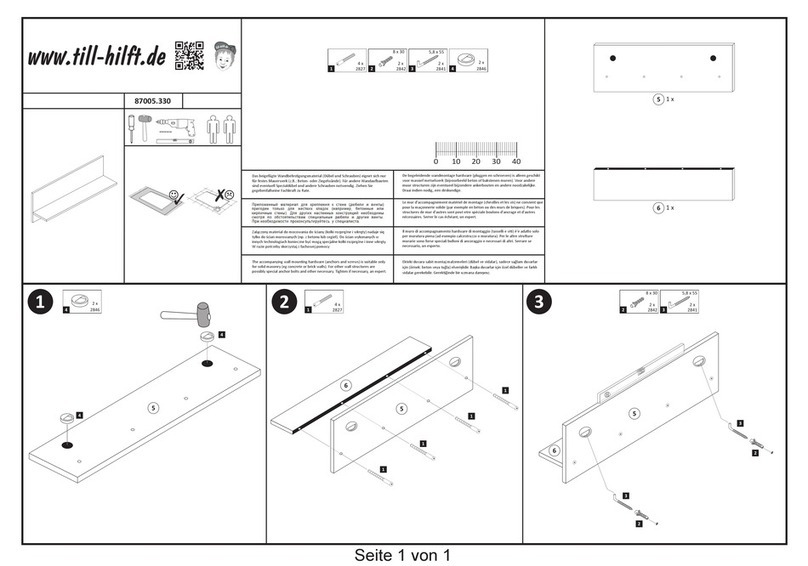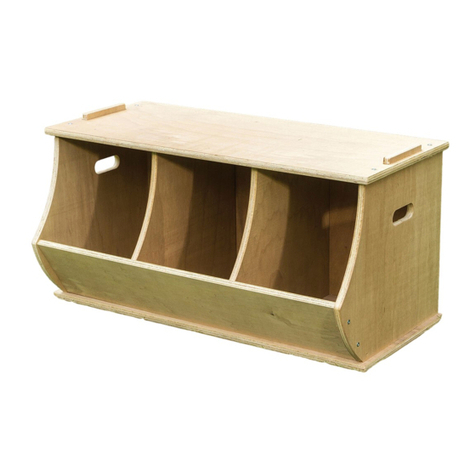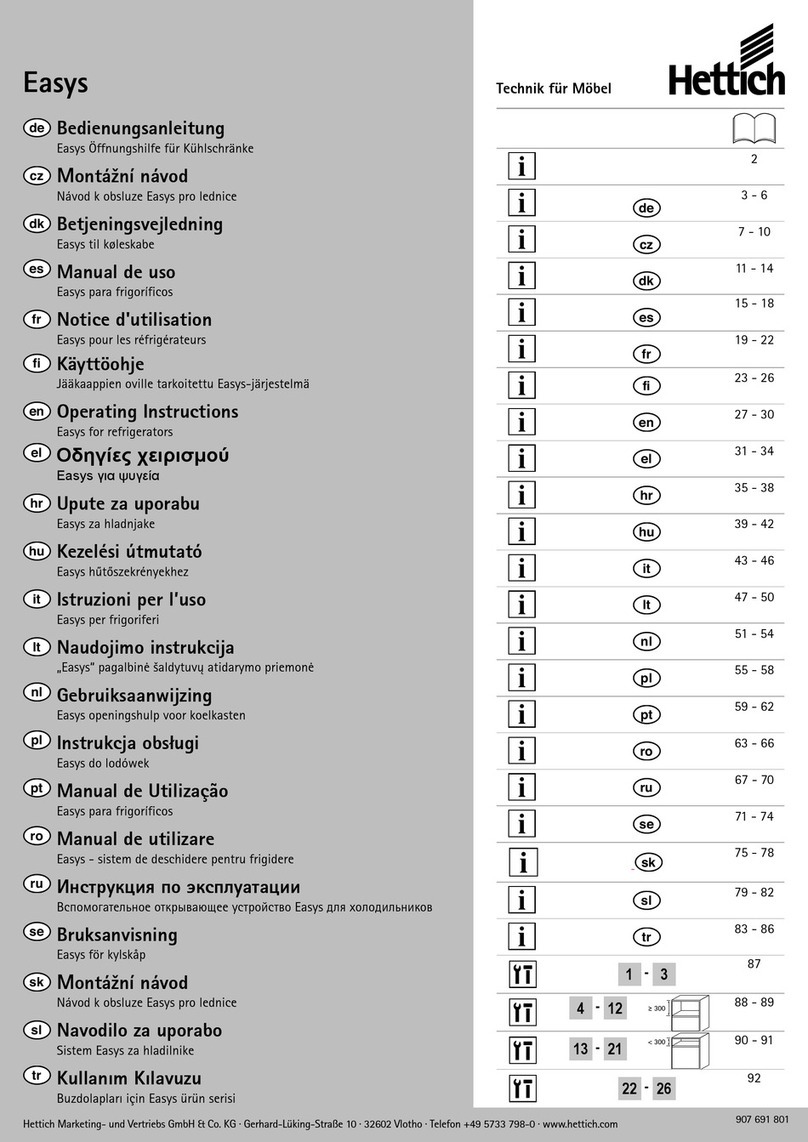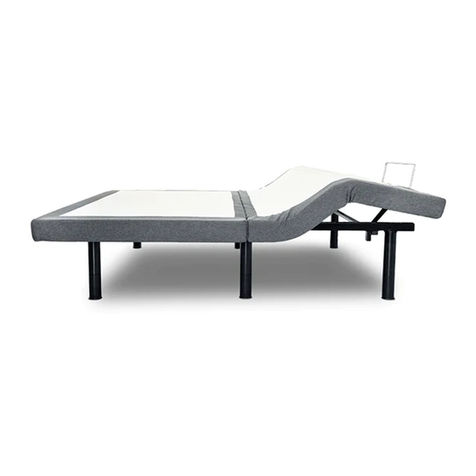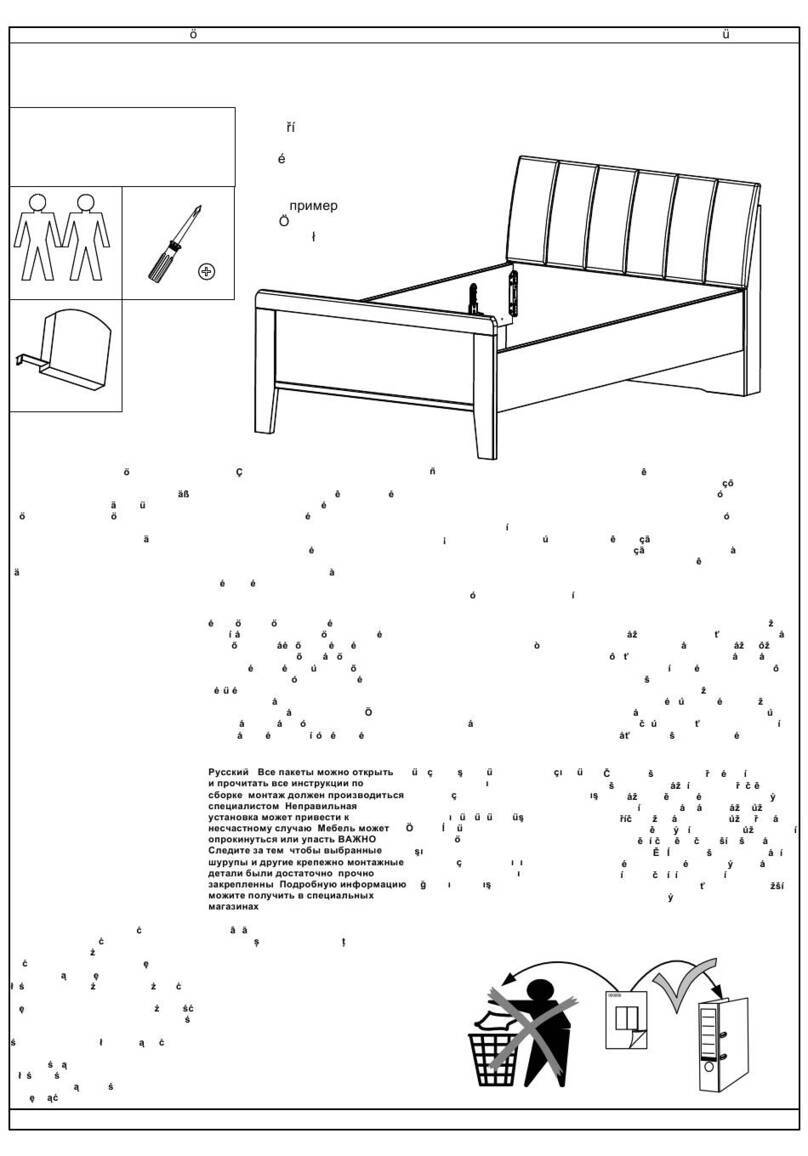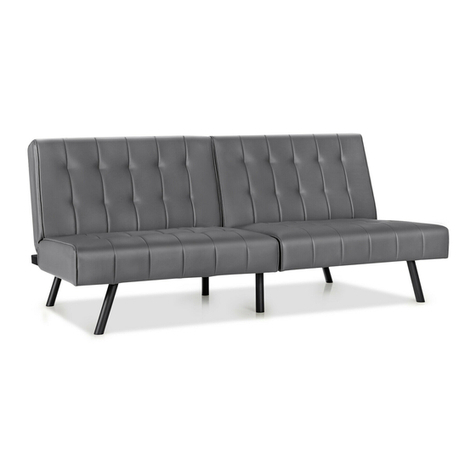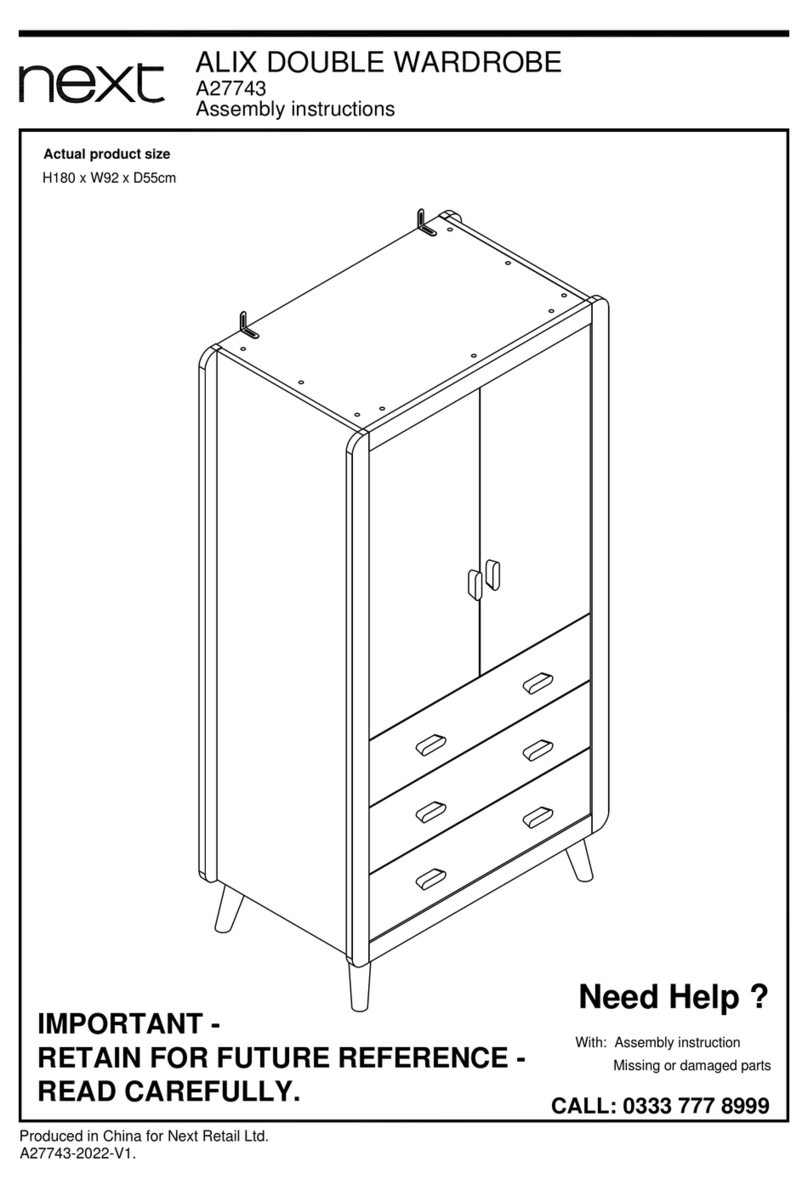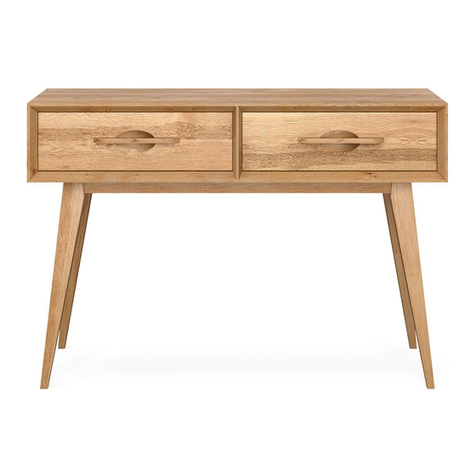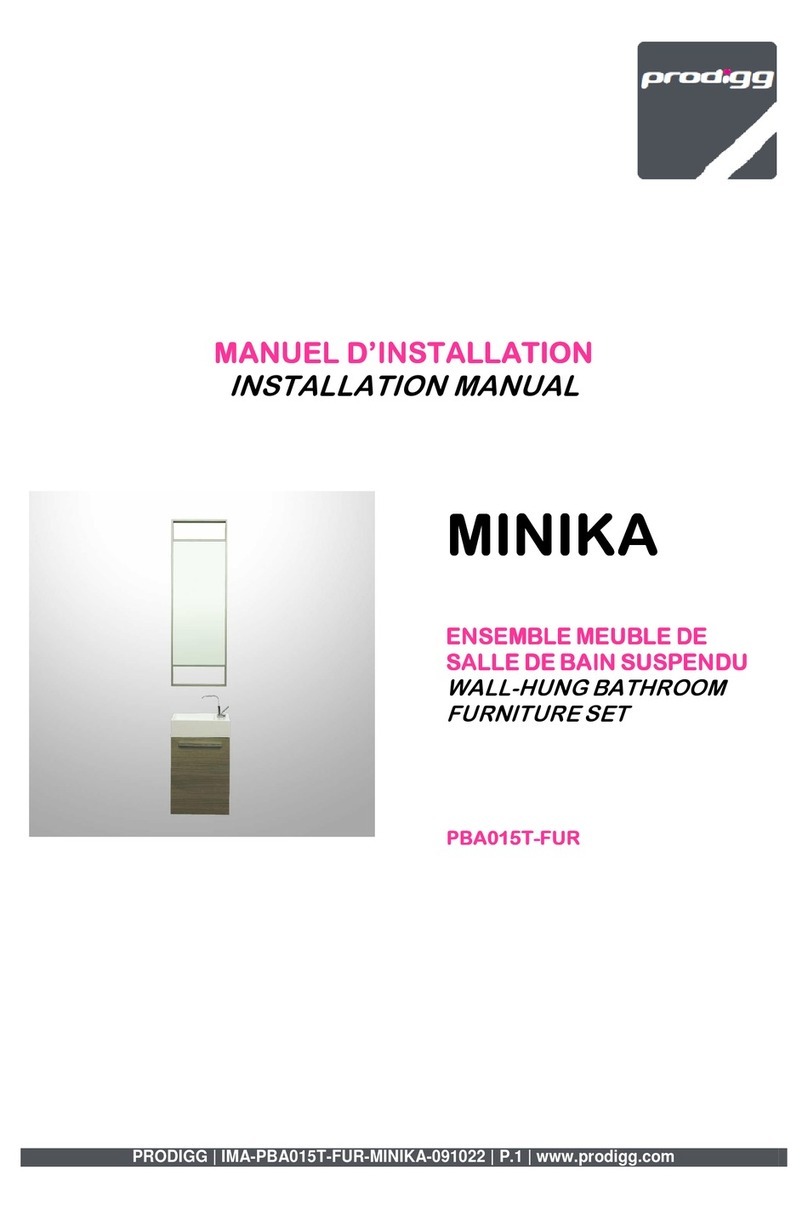
7
8. Locate the studs in the wall above the
bridge. (1) Make sure the bed cabinet is level
and the sides are vertical. (2&3) Then attach
the bridge to the studs in the wall by placing a
minimum of 2 screws (3 are recommended)
that are 2 1/4” into the top of the bridge where
the studs are located. Do not drill any into the
rear toe kick as of yet, this will need to be able
to shift so we can make sure there gap between
the face panels and the side panels are even in
later steps.
Note: If you did not notch out for the base-
board you have to shim the bridge out an
equal distance.
9. Locate the Face Panels; they are labeled EL, EC and ER
(left, center and right). Lay them face down on a soft clean
surface. Make sure they are all going in the same direction
and none are upside down. Make sure the panel labeled ER is
at your left, EC is at the center and EL is at your right. (Note:
they are reversed because they are face down.
If you ordered just the bed, the top of your face panels will be
the small squares. If you ordered side cabinets with it
(example: C1-C5) then the large rectangle will be the top of
your face panels. Note : Left and right is as you are facing the
bed.
10. Make sure the face panels are flush at
the top and bottom and place 6 flat connec-
tion brackets where the edges of each face
panel meets each other (brackets shown in
(1) locations for brackets shown in diagram
1. Do not put the brackets on the very edge
of the top or bottom. Start no less than 2 1/2
inches from the top or bottom edge. Evenly
space them and use 5/8” washer head
screws to attach the brackets to the panels.
(2) Place one screw into one of the bracket
holes on one panel and then (3) when you
put the screw into the hole for the other
panel make sure you put it at an angle to
tighten the face panels together (4).
Note: King or Horizontal bed will have a
supplement bag with extra flat brackets still
only using 3 per seam.
1) 2)
3)
1) 2)
3) 4)
